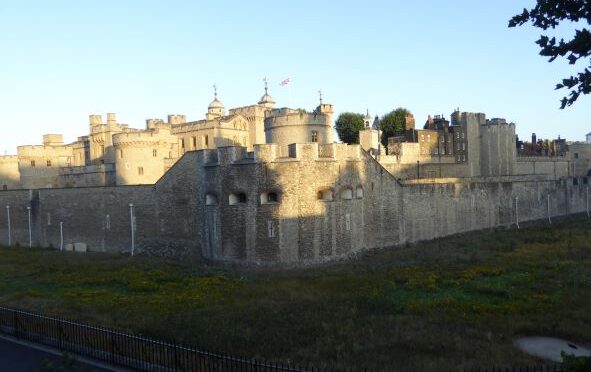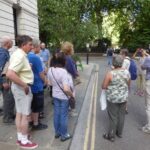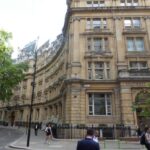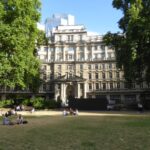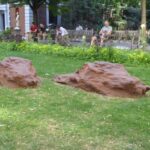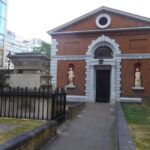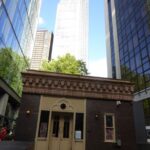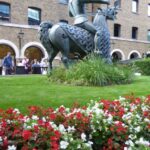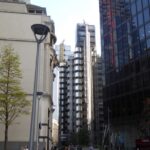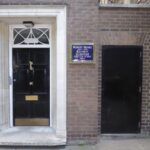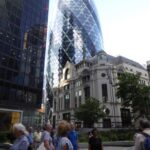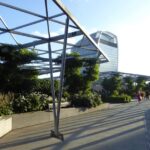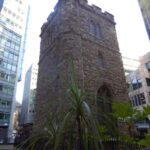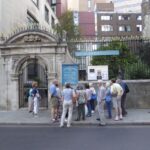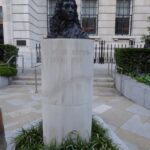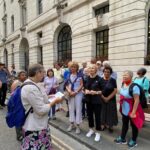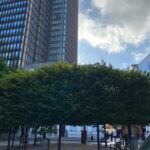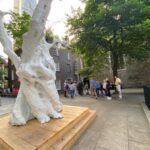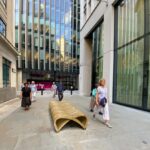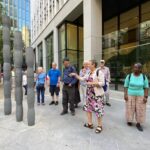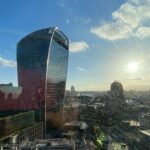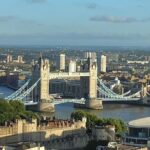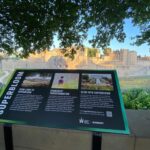It was a nice summer evening for this walk through some of the City’s gardens. There were 19 of us – we could have been 20 but Danny was doing his washing. Our first stop was Finsbury Circus which was originally part of the Finsbury Manor Estate. The garden was shut for a number of years as the centre of the site was used as an access shaft for Crossrail. Next was the small garden of All Hallows on the Wall and the larger garden of St Botolph without Bishopsgate with one of the abstract sculptures from the City Trail. We went up to the Victorian bathhouse and then headed to Devonshire Square, then Cutlers gardens and Jubilee Gardens. We made our way to the Swiss Re Tower. The walk description says: ‘it is one of the most distinctive buildings in London’s skyline to date. It is 590 ft (180 m) tall, making it the second tallest building in the City of London after Tower 42.’ How things have changed since this was written! We made a small detour to St Helen’s Church and then headed to St Andrew Undershaft. The name Undershaft appeared in the 15th century and was derived from the tradition of raising a maypole each year, directly opposite the church. The maypole is still there but by the Leadenhall building. We went past the Lloyd Building to Fen Court where we were entertained by a big rat running around the garden. This old churchyard contains the ‘Guilt of Cain’ sculpture commissioned to commemorate the bicentenary of the abolition of the transatlantic slave trade in 2008. We then turned into Fenchurch Street and, at number 120, after going through security checks, we went up to the rooftop garden. It’s a beautiful garden with a water feature and amazing views.
After herding the group towards the exit, we made our way to Seething Lane, the site of the home of Samuel Pepys, and St Olave’s Church. A Seething Lane Garden contains a sculptured head of Samuel Pepys. Then, led by Sandy, we went to Trinity Square Garden, more specifically to the memorial to those executed on the former Tower Hill scaffold. It has a number of plaques listing the names and year of execution of many of the more well-known victims such as Sir Thomas More and Thomas Cromwell. We crossed the road and ended the walk at the Tower of London where we had a quick look at the Superbloom, a new natural landscape in the moat. Nine of us made our way to the nearest Wetherspoon for dinner.
Dominique (photos by Stuart and Ida)

